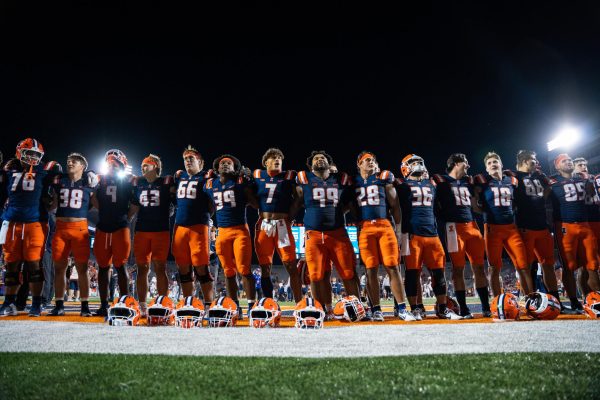Law textbooks to add Web interface
May 1, 2008
Last updated on May 13, 2016 at 10:37 a.m.
New law textbooks are combining conventional print with an interactive online version in an attempt to connect with the modern technological student.
Michael Murray, a University law professor, is co-writing the new first-year law textbooks with Christy DeSanctis, a professor at George Washington University School of Law, and the books will be available for the fall 2009 semester, Murray said.
Students will be able to purchase a standard textbook with updated information, charts and diagrams to aid the visual and non-verbal learner, Murray said. But the textbooks will also include an online version to be loaded onto a computer.
“The electronic version is a complete substitute for the hard copy,” Murray said. “No need to lug the 8-pound book to class.”
Get The Daily Illini in your inbox!
These books are the latest in the “Interactive Case Series” that was launched last fall by A. Benjamin Spencer, a law professor at the University of Richmond, Murray said. The new hybrid books will include searchable text and hyperlinks to additional materials, cases, statutes and journal articles, he added.
“We can link to just about anything, including problems and exercises, that can help flesh out and explain the material in the text,” Murray said. “I hope to add Flash media with audio and visual content.”
Demat Fazil, sophomore in LAS, and Kristine Vins, sophomore in AHS, think this new version of textbooks is a good way to connect with the new generation of students.
“More and more of my classes have online quizzes and post the lectures online,” Fazil said. “So it makes sense to have textbooks available online.”
Lighter bookbags are a nice perk as well, Vins said.
“It would be easier to carry around my laptop instead of books for every class,” Vins said.
“Having links to legitimate Web sites instead of trying to search the Internet for it will help make sure people get the right information,” he said.
The other books in the interactive series have caught on at several universities, and Murray predicts other courses will begin to use a combination of online and hard copy textbooks.
“It has already caught on in some high school texts,” Murray said. “I assume there will be a large demand in undergraduate texts as well as in other graduate disciplines.”





